After driving for half an hour on the winding mountain roads of Nice, France, the driver quietly announced in the darkness, “We’ve reached Monaco.” It’s hard to imagine that this tiny territory of 2.08 square kilometers could have such an astonishing international influence today.
In the mid-20th century, Monaco’s Prince Rainier married Oscar-winning actress Grace Kelly, and the royal family has been diligently working to make their presence known ever since. Monaco boasts a charming coastline for yacht mooring, and the wealthy are drawn to its tax-free policies.
Each year, the Formula 1 Monaco Grand Prix held on the narrow streets of Monte Carlo, along with the Monte Carlo Masters tennis tournament, captures the world’s attention.

In June, Monaco is lush with vegetation and abundant sunshine. People don loose, light-colored clothing as they sit outdoors, enjoying the gentle breeze, fragrant flowers, and fine wine. A century ago, Mademoiselle Chanel’s state of mind here was likely just as peaceful and relaxed. She came to Monaco to watch tennis matches and even purchased land nearby to build her villa, La Pausa.
In 1913, she opened a hat shop at the Hermitage Hotel in Monaco. Now, a century later, we gather here to celebrate the launch of Chanel’s Haute Joaillerie Sport collection.
01
The latest collection was exhibited in a pure white “sports arena,” with a mini spectator stand featuring off-white seats. The space was originally a Baroque-style building, with its opulent interior design surrounding this centrally placed “sports arena” with simple colors and modern lines, creating an intriguing contrast between classical and contemporary styles.

Patrice Leguéreau, Director of Chanel’s Fine Jewelry Creation Studio, mentioned: “This high jewelry collection themed around sports draws inspiration from Chanel’s sporting elegance, an indispensable stylistic element in Chanel’s history: elegant lines and freedom of movement.”
The Haute Joaillerie Sport collection comprises 80 pieces divided into 7 chapters, which can be viewed from multiple perspectives.
For instance, each piece contains Mademoiselle Chanel’s “codes”: the lion, symbolizing Chanel’s zodiac sign, is set within a shield-shaped emblem; Chanel’s favorite number 5 appears in the font used for stopwatches or in various forms in unexpected places; and the “chevron pattern” – which Mademoiselle Chanel first introduced in her 1932 diamond jewelry collection, Bijoux de Diamants.
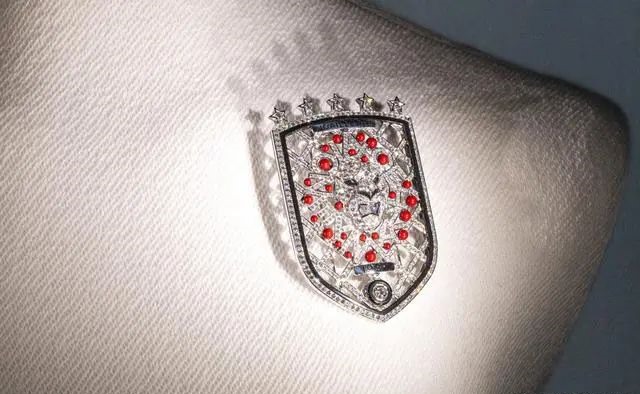
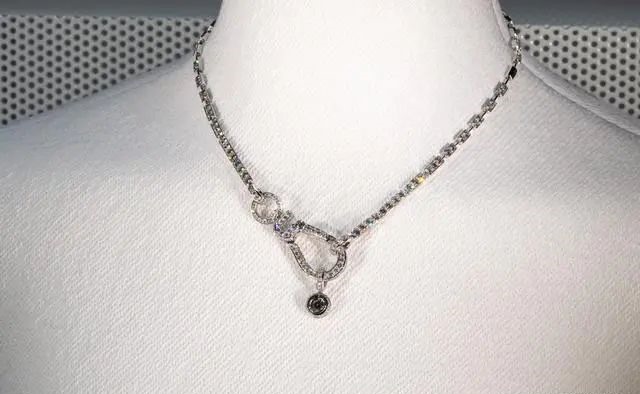
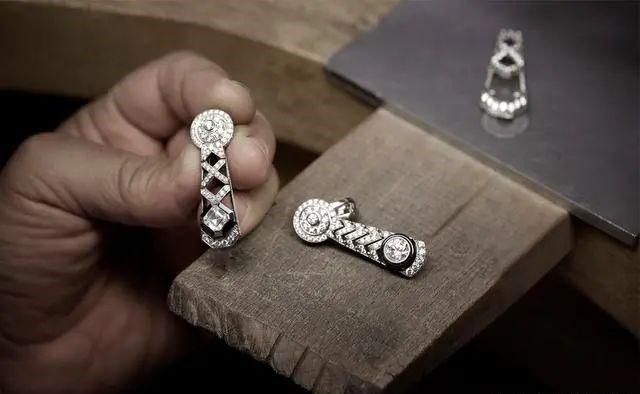
Another clear perspective is the “sports” spirit infused into each piece. This is evident in designs mimicking sportswear collars, drawstrings, and zippers, as well as incorporating sports equipment structures like carabiners and pulleys, or using carbon fiber, a crucial new material in the sports field.
In 2020, British journalist and jewelry expert Melanie Grant published a book titled “Coveted: Art and Innovation in High Jewelry,” focusing on some unique jewelry pieces with exciting innovations. These innovations, which don’t conform to traditional jewelry formulas, stem not only from conceptual approaches but also involve craftsmanship, design, and materials.
At the forefront of today’s jewelry world, new materials like titanium and carbon fiber are gaining attention. The author proposes a combination of “precious metals, gemstones, and high-tech materials,” an area still largely unexplored.
02
The Haute Joaillerie Sport collection might be Chanel’s boldest creation in recent years. Patrice Leguéreau has demonstrated his sensitivity to cutting-edge materials and his mastery of many traditional materials.
The works feature rare gemstones and precious metals, as well as materials that appeared later in jewelry history, such as enamel, aluminum, and ceramics. Carbon fiber stands out particularly, with its impressive properties yet extreme difficulty in processing.

Carbon fiber, obtained through a special fiber-making process, has a diameter of only 5 to 10 microns and possesses excellent heat resistance, friction resistance, thermal conductivity, and corrosion resistance. Since its inception, carbon fiber has been shrouded in mystery and later used in aircraft and spacecraft manufacturing.
Today, it is widely used in competitive and high-impact sports equipment like racing cars, golf clubs, and sailboat masts, becoming a crucial player in the sports field.
Carbon fiber has long fascinated the watch industry and is now gaining traction in jewelry. Using carbon fiber in jewelry creation can reduce weight. For the same volume, carbon fiber weighs only one-twelfth of gold and one-third of titanium.
Carbon fiber gives jewelry extraordinary strength and wear resistance, and its biocompatibility makes it comfortable on the skin. The deep black color of carbon fiber is both subdued and rich, exuding a sci-fi feel as if from outer space.
The most representative piece is a cuff bracelet created with diamonds, rubies, and carbon fiber. In a VOGUE Arabia report, Patrice Leguéreau explained that the piece uses carbon fiber as a “fabric,” covering the surface of the work.


White gold, carbon fiber material, black lacquer, red aluminum material
Set with diamonds and rubies
1 brilliant-cut diamond, 3.08 carats, D IF grade
Working with carbon fiber is extremely challenging, and traditional mechanical cutting techniques cannot achieve the desired effect. To “print” the 6 letters “CHANEL” on the outer surface like lace, without any distortion, the craftsmen used laser engraving technology. The final piece is intricately designed, well-proportioned, and comfortably fits the skin, allowing women to wear it with ease.
03
Chanel hosted a dazzling evening gala in Monaco, where British actress Keira Knightley wore the most magnificent set from the Chanel Haute Joaillerie Sport collection.
She donned a light blue, ethereal tulle gown from Chanel’s Spring/Summer 2024 Haute Couture collection, complementing the centerpiece of the Graphic Line necklace – a 10.15-carat Kashmir sapphire.
This necklace, crafted from white gold, platinum, diamonds, sapphires, rubies, and onyx, resembles overlapping collars. The edges are outlined with baguette-cut rubies, while triangular patterns of differently cut white diamonds accentuate the most exquisite blue at its center.
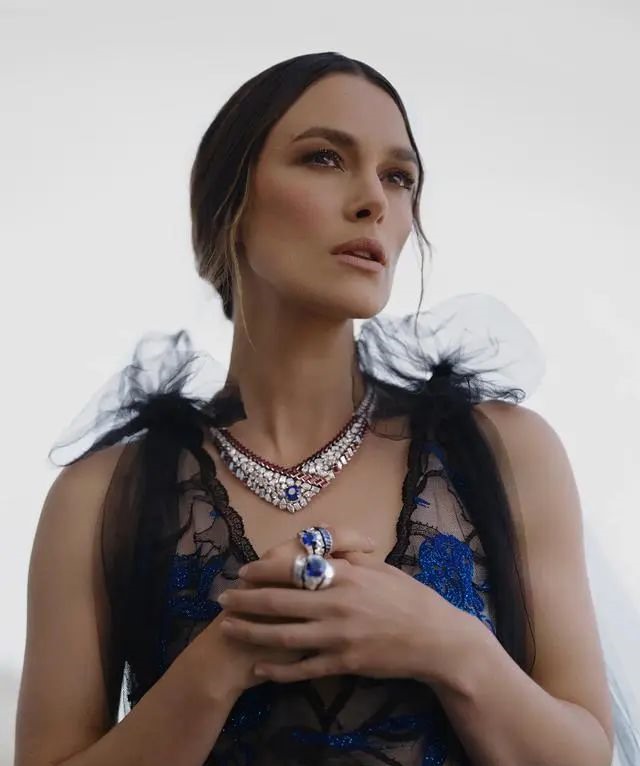

White gold, platinum, set with diamonds, sapphires, rubies, and onyx
1 cushion-cut sapphire, 10.15 carats
Keira Knightley told VOGUE UK that despite its substantial size, the necklace was so light she could barely feel it. “I feel like I could wear it home, even to drop the kids off at school,” she joked.
Earrings and rings complete the set, featuring a total of five Kashmir sapphires – the most precious in the sapphire world. Chanel had been searching for these dream sapphires for years, only unveiling the complete set when it was finally assembled.
Chanel brand ambassador Xin Zhilei also wore a necklace from the new collection at the event – the Quilted Stars necklace. Its silhouette resembles a simple V-neck, with a mesh metal structure mimicking a quilted pattern. Centered around an emerald-cut yellow diamond, the “collar” is adorned with lacquered number 5s and star patterns set with sapphires.
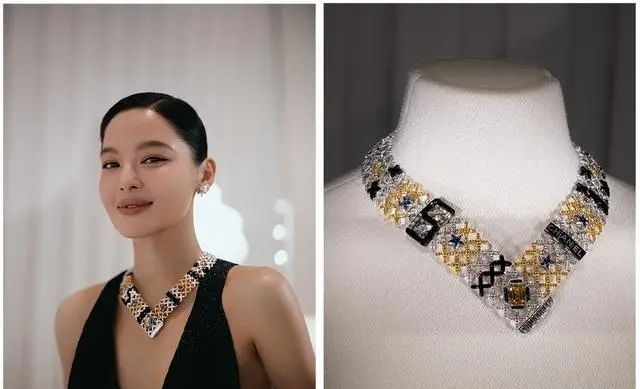
White gold, yellow gold, set with diamonds, yellow diamonds, sapphires, and onyx
1 emerald-cut yellow diamond, 7.06 carats, FVOY VSI grade
Gemstones offer yet another perspective on this collection. The 80 pieces feature a wide array of stones including sapphires, rubies, spinels, garnets, yellow diamonds, emeralds, and onyx. The colors are rich and the carats substantial, with the largest sapphire weighing 35.10 carats, square-cut and set in a ring.
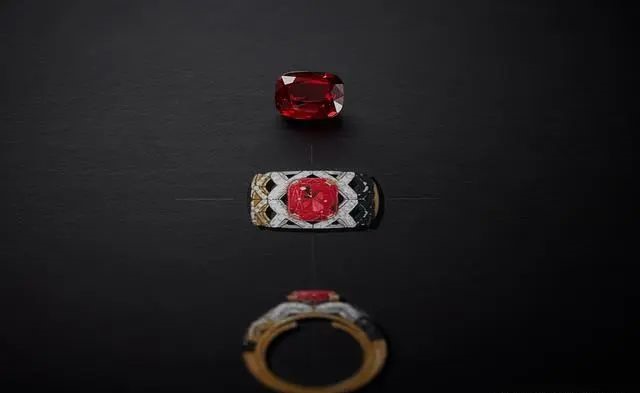
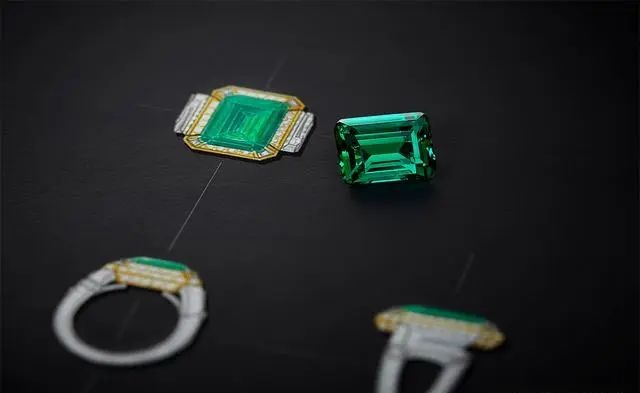
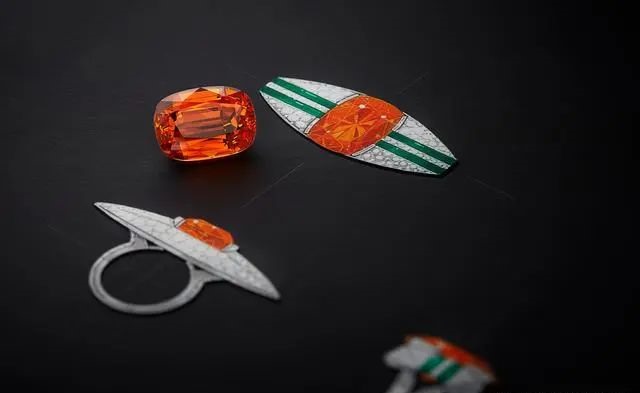

Different colored gemstones are combined with enamel and anodized colored aluminum, creating vibrant, contrasting effects in the pieces. For instance, emerald is paired with blue lacquer, orange with green, and some pieces even feature blue, red, and gold simultaneously, reminiscent of the bold, passionate color schemes of sportswear.
While the gemstones sparkle brilliantly, the new materials balance them with subtle hues.
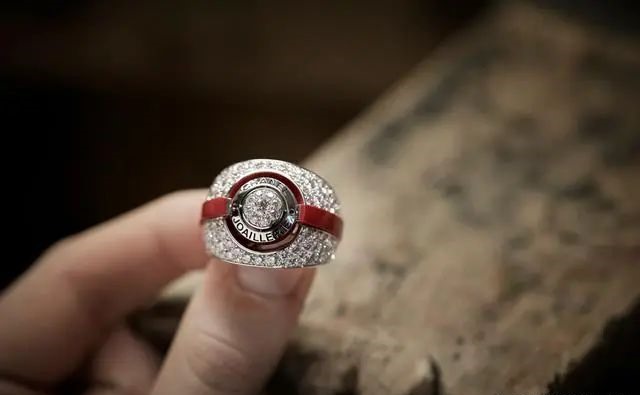
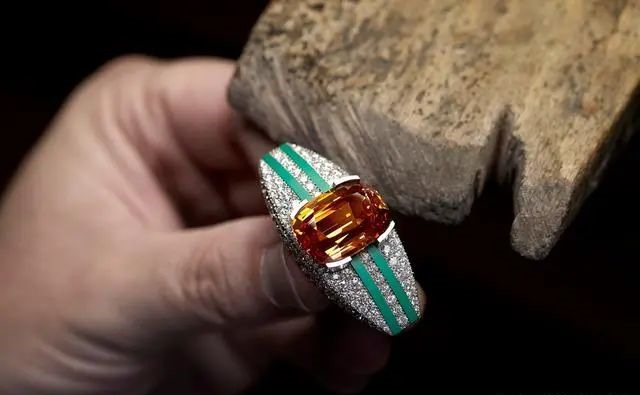
The contours of the pieces are based on ergonomic aesthetics, with lines full of vitality and dynamism, highlighting the freedom of the body and the elegance of movement. One necklace, in particular, closely resembles the collar of a sports hoodie.
Chanel specially developed a tubular chain called the “sports drawstring,” which serves as the golden drawstring for this jewelry “hoodie.” Sapphires outline the shape, white diamonds are set to represent the fabric, and red lacquer circular details add a playful touch.
The sports drawstring is cleverly used in earrings and necklaces, arranged in tubular form with details of different colors and materials such as black ceramic rings, emerald or white diamond-set green circles, and ending with small black lacquer cylinders, closely resembling the ends of sports drawstrings.
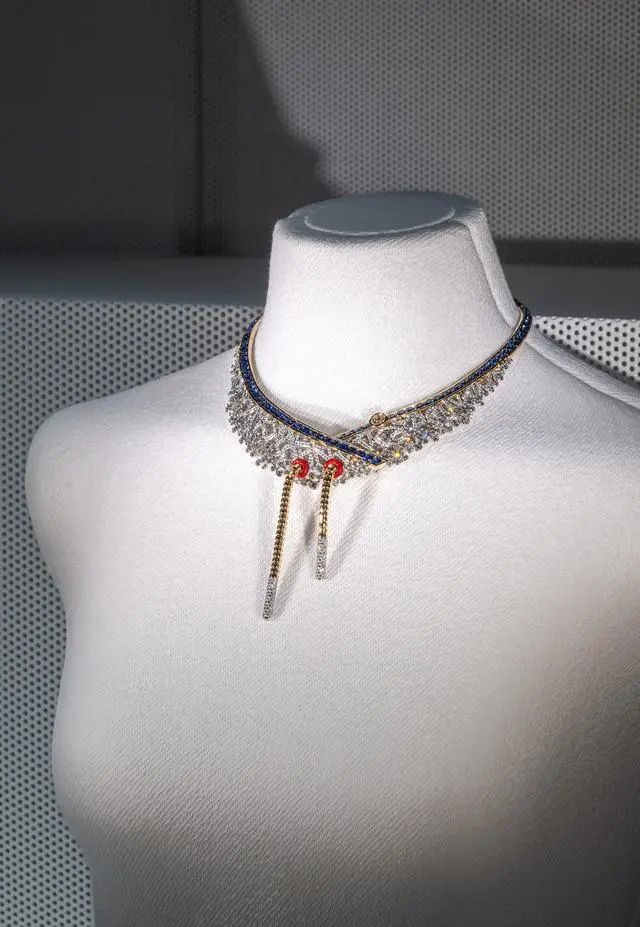
White gold, yellow gold, red lacquer, set with diamonds and sapphires
1 brilliant-cut diamond, 1.04 carats, D VVS1 grade
Diamond-set carabiners forming the number 5, clasps inspired by Chanel’s iconic 2.55 handbag, roller skate devices with intricate mechanical structures… these details endow the pieces with dazzling transformable wearing options. One piece even comes with multiple charms that can be added or removed at will, like a little girl playing with a charm bracelet.
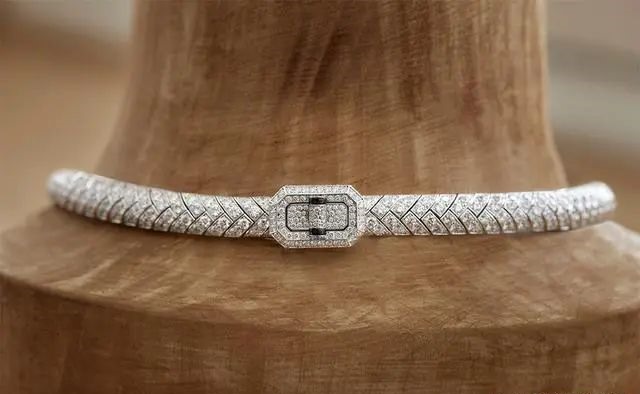
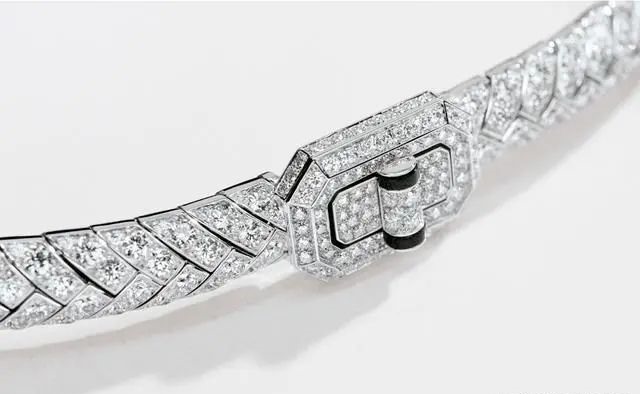
The sliding clasps are ingeniously designed, such as the Gold Slider Black&White necklace, which combines white gold with red and black lacquer, black and white precision ceramics, and diamonds. The sliding clasp on the necklace can be positioned at different points on the chain, offering two wearing styles: a double-loop short necklace or a long necklace.
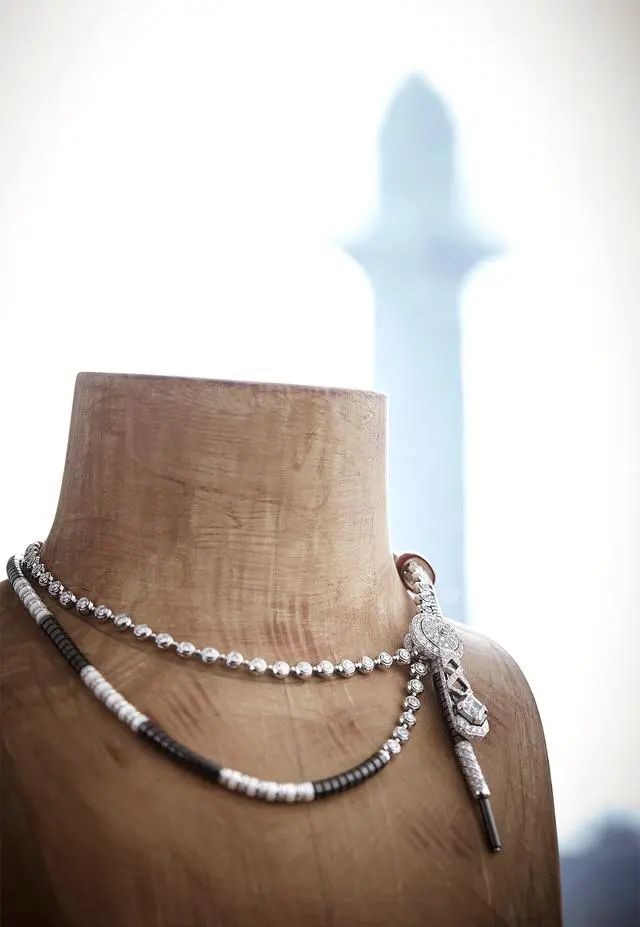
White gold, red lacquer, black lacquer, black and white precision ceramics, set with diamonds
1 Asscher-cut diamond, 2.04 carats, DE IF-VVS grade
Transformable wearing options:
The sliding clasp can be positioned at different points on the chain, offering double-loop short necklace or long necklace styles
The Gold Slider ring, set with diamonds in yellow gold, features a center that can be flipped, allowing it to be worn with either the main stone side or the pavé side facing up, creating different effects.
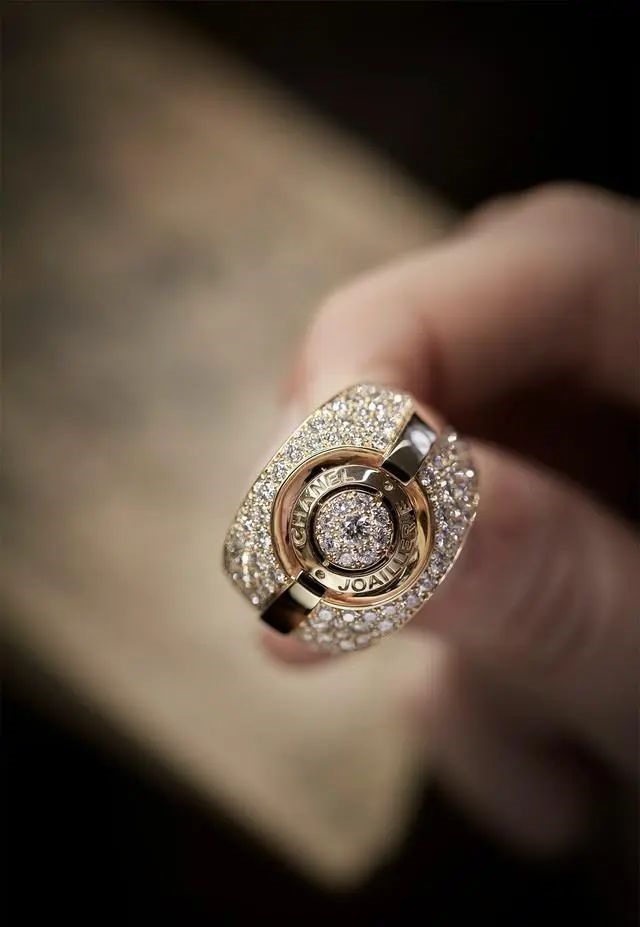
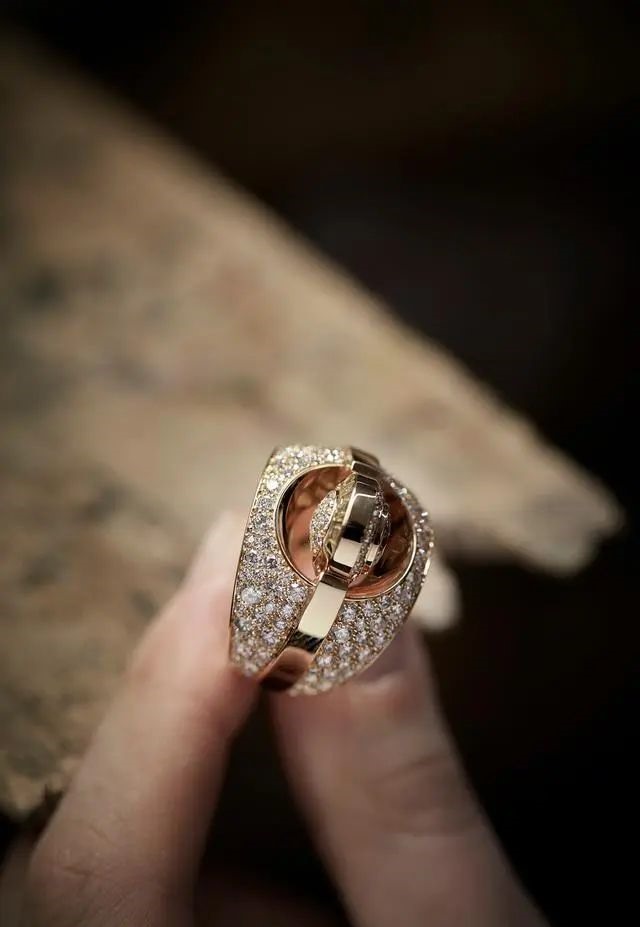
Yellow gold, set with diamonds
1 brilliant-cut diamond, 1.01 carats, E VVS1 grade
Transformable wearing options:
The ring center can be flipped to wear with either the main stone side or the pavé side facing up
The cuff bracelet made with carbon fiber material features four uniquely constructed semi-circular arc structures. Two are in silvery white gold set with diamonds, a classic material, while the other two are in deep black carbon fiber. Any two arcs can be chosen to form a complete bracelet, resulting in three distinctly different styles.
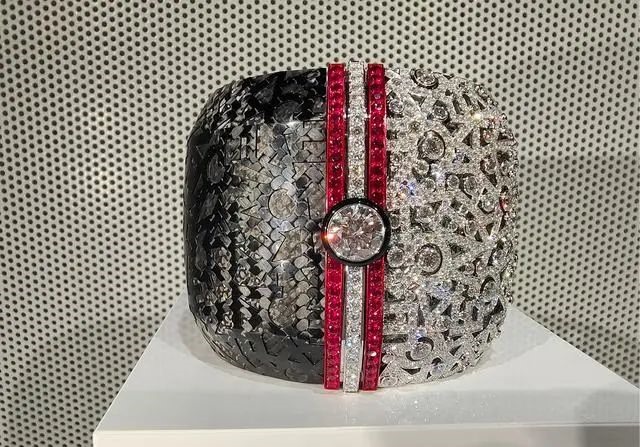
White gold, carbon fiber material, black lacquer, red aluminum material
Set with diamonds and rubies
1 brilliant-cut diamond, 3.08 carats, D IF grade
Transformable wearing options:
White gold set with diamonds style, carbon fiber material style, or a mix of white gold set with diamonds and carbon fiber material style
These various transformable designs highlight Chanel’s longstanding fine jewelry design philosophy: women should be free to wear jewelry in whatever way they desire.
04
Exactly a century ago, in 1924, Mademoiselle Chanel designed costumes for the Russian Ballet’s “Le Train Bleu,” collaborating with Picasso. Instead of traditional puffy ballet tutus, she created lightweight knit swimsuits, golf, and tennis outfits for the dancers, allowing them to move freely and gracefully on stage like athletes.
In this collection, sport is expressed as a “rhythm,” rich in elegant cadence. Throughout the long history of jewelry, naturalistic works of the last century often expressed movement through imagery such as birds and butterflies flapping their wings or wind blowing through wheat stalks.
Today, as Chanel begins to tell a story themed on “rhythm,” it expresses body consciousness and freedom of movement, exuding a strong sense of modernity and breakthrough from within.
Take the sports hoodie as an example. Traditionally not known for being expensive or refined, it prioritizes functionality and comfort. Chanel’s expression of the sports hoodie in luxurious materials creates a sense of contrast and challenge.

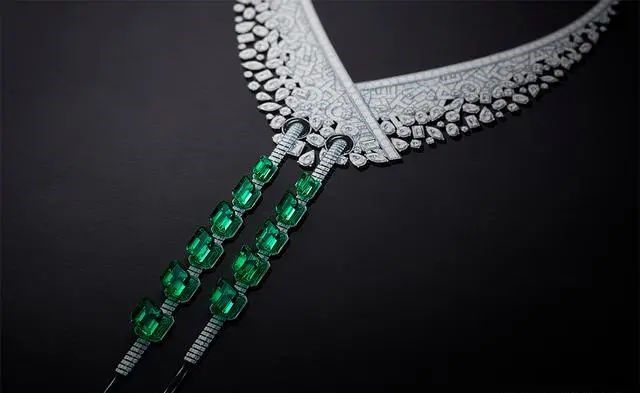
Jewelry has always been considered representative of preciousness and delicacy. In the last century, when upper-class women wore jewelry to formal dinners, they would maintain an upright posture to avoid damaging their jewels, with jewelry quietly playing the role of a constraint.
This time, however, Patrice Leguéreau has made the jewelry very light, using wear-resistant carbon fiber material. The rotating clasps and sliding lock structures encourage women to move and play with their jewelry.
It’s hard to imagine that such tradition-breaking fine jewelry creation still has its roots in Mademoiselle Chanel. In 1921, Mademoiselle Chanel established a workshop specifically for designing and producing sportswear for her haute couture brand. Abandoning the corsets that restricted women’s bodies at the time, she said, “Nothing is more beautiful than a body in motion.”

Her consistent desire for comfort and liberation is evident in her clothing designs. She incorporated materials from men’s clothing, made the easy-to-move-in sailor stripe shirt a classic, and even found the tweed jacket from the Duke of Westminster. All of these allowed women to move without restriction. She herself was also a sports enthusiast, leaving behind precious photos of her horseback riding and playing sports.
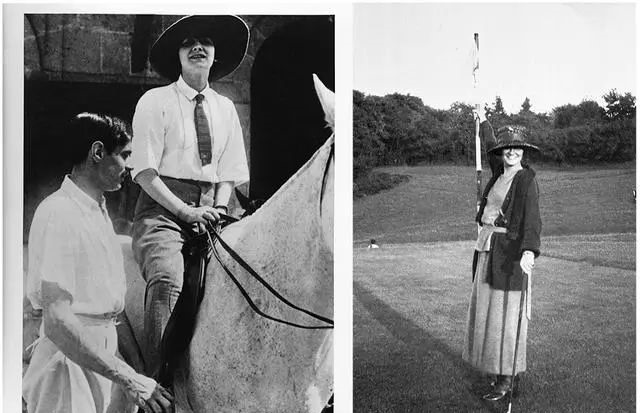
In the book “Coveted: Art and Innovation in High Jewelry,” the author points out that over the past hundred years, the top collectors in the jewelry world have changed from royalty to wealthy entrepreneurs of the 20th century, and now to the rising young global elite. On the other hand, women have gained increasingly more power in the creation and purchase of jewelry.
The Haute Joaillerie Sport collection, like sportswear, is closer to the natural structure of the human body, combining elegant lines with freedom of movement. In Monaco, Patrice Lenguéreau unveiled a completely modern and even fantastical collection. He skillfully uses various codes left by Mademoiselle Chanel to convey her spirit from a century ago.

White gold, platinum, set with diamonds, emeralds, and sapphires
1 octagonal-cut emerald, 6.40 carats
He boldly combines the most classic and rare gemstones in the jewelry world with relatively unfamiliar technological materials, once again astonishing us with Chanel’s courage to stand at the forefront of trends. When you carefully “read” these 80 pieces, you’ll discover multiple clues intertwining to form a network that is both free-flowing and extremely rigorous and logical.
Every Chanel story shares the same quality and soul. Pursuing physical freedom leads to spiritual ease.
A Century Later, Chanel Still Breaking Traditions in the Heart of Monaco
Tweet





